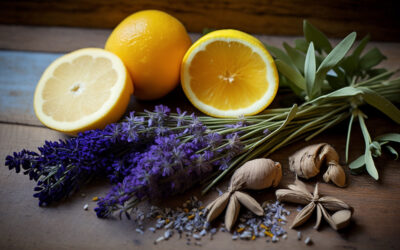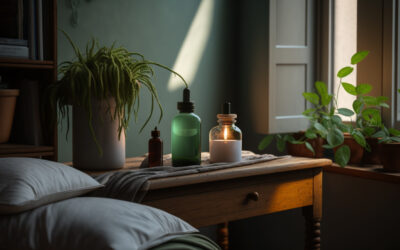When it comes to massage therapy, there are two distinct titles that a professional can hold. On one side, you have the non-registered massage therapist; on the other, you have the registered massage therapist. Both of these titles represent different levels of expertise and knowledge when it comes to providing therapeutic treatments for their clients. In this article, we will explore both options in detail and discuss which type may best suit your individual needs and goals. We’ll also look at some of the benefits of each type of practitioner so that you can make an informed decision as to which is suitable for you.
Table of Contents
Non-Registered Massage Therapist
The main difference between a non-registered massage therapist and a registered one is that they do not need to complete the RMT educational program. A non-registered massage therapist will normally hold a massage certification that only requires 300 – 1000 hours of experience. Many non-registered massage therapists continue their education by specializing in certain modalities such as Swedish Massage, Deep Tissue Massage, and Trigger Point Therapy. However, they are still not considered registered unless they complete an RMT program in their practicing province. A non-registered massage therapist may also be referred to as a masseuse, masseur, or spa practitioner.
Because non-registered massage therapists often specialize in different modalities and relaxation treatments, they are better suited to clients who prefer more soothing and calming massage sessions. This type of massage is designed to reduce stress, tension, and anxiety by using gentle, slow strokes and kneading techniques that focus on calming the mind and body. It can help those who suffer from chronic pain, headaches, insomnia, depression, and more.
Many spas will offer both Registered Massage Therapists and Masseuses in order to meet the needs of their clients. RMT students will often get the chance to practice as non-registered massage therapists at a spa while they are still in the RTM program.
Benefits of a Non-Registered Therapist
- Non-registered massage therapists are typically more affordable than registered therapists, making them an excellent option for individuals looking for cost-effective treatments.
- Non-registered massage therapists don’t typically require appointments. This can be beneficial if you need quick and easy access to a massage therapist without the hassle of booking an appointment in advance.
- Non-registered massage is typically tailored for a relaxing experience rather than a rehabilitative one.
- This type of massage is an excellent option if you’re looking for a massage to help you relax and unwind.

Registered Massaged Therapists
A Registered Massage Therapist (RMT) is a professional who specializes in the assessment, treatment, and prevention of soft tissue pain and dysfunction. They provide hands-on treatments such as trigger point therapy, joint mobilizations, deep tissue massage, myofascial release techniques, and other manual therapies. RMTs are trained to understand the anatomy and physiology of the body in order to accurately assess a person’s condition, diagnose any existing conditions, and provide effective treatment.
In Canada, becoming a Registered Massage Therapist (RMT) requires a comprehensive education program approved by the provincial regulatory board. Depending on the province and massage therapy association, this program usually requires 3000+ hours of coursework. This includes theoretical and practical components – such as anatomy, physiology, kinesiology, pathology, clinical assessment, and massage techniques – plus a mandatory internship under the supervision of an experienced practitioner.
An RTM license is only valid in the province you studied in. In British Columbia, Canada, the College of Massage Therapists of BC (CMTBC) is responsible for regulating and registering massage therapists.
Benefits of a Registered Therapist
- Registered massage therapists are highly qualified professionals who understand the intricacies of the body and provide effective treatments for those with persistent pain and dysfunction.
- RMTs use a wide range of therapeutic modalities in order to customize treatment plans to each individual’s needs. This can be beneficial for those looking for targeted relief from certain conditions or ailments.
- Registered Massage Therapists are required to provide an RMT receipt for insurance purposes. This can be beneficial if you plan on using your health benefits to cover the cost of treatments.
- RMTs are subject to rigorous standards set by their governing body and must adhere to stringent guidelines when it comes to professional conduct. This ensures clients are receiving quality treatments and services.
Registered Vs Non-Registered Compared:
| Characteristics | Non-Registered | Registered |
|---|---|---|
| Education requirements | 300-1000 hours of massage certification | 3000+ hours of coursework approved by provincial regulatory board |
| Types of treatments offered | Specializations in certain modalities such as Swedish Massage, Deep Tissue Massage, and Trigger Point Therapy | Hands-on treatments such as trigger point therapy, joint mobilizations, deep tissue massage, myofascial release techniques, and other manual therapies |
| Cost | Typically more affordable | Generally more expensive |
| Insurance coverage | May not offer RMT receipt for insurance purposes | Required to provide an RMT receipt for insurance purposes |
| Professional Conduct | Not subject to the same rigorous standards as RMTs | Subject to stringent guidelines when it comes to professional conduct |
| Target clientele | Suited to clients who prefer more soothing and calming massage sessions | Suited to clients with persistent pain and dysfunction |
How many Registered Massage Therapists are there in Canada?
A survey of Canadian massage therapists found that 51% of practitioners were registered. In Ontario, there were 13,970 registered massage therapists in 2019, with 944 deemed inactive.
“In 2020, the number of inactive massage therapists increased by 22 percent to 1,254 while the number of registered massage therapists in the province dropped to 13,684.” – CBC News
The Canadian Massage Therapist Alliance’s written submission for the Pre-budget consultations in advance of the 2020 budget states that “there are more than 19,500 registered massage therapists practicing in Canada.”
Considering the available information, we can project the number of registered massage therapists in Canada for 2023:
- Registered Massage Therapists: 18102
- Non-Registered Massage Therapists: 14959
- Inactive Massage Therapists: 2431
Conclusion
When deciding between a non-registered or registered massage therapist, it is important to consider your individual needs and expectations. Non-registered therapists are typically more affordable and may provide specializations in certain areas, while RMTs offer more comprehensive treatments tailored to the individual’s needs. Ultimately, the decision should be based on your comfort level with the therapist and their qualifications.
Both registered and non-registered massage therapists offer the potential for relief from physical pain and emotional stress, so it is important to weigh your options carefully before making a decision. No matter which type of massage you choose, taking the time to research your options can help ensure that you receive effective treatment from a qualified professional.
Helpful Sources:
- College of Massage Therapists of British Columbia. What is an RMT?
- Registered Massage Therapist Association of British Columbia. Conditions treated.
- Government of British Columbia. Education Quality Assurance.
- Canadian Massage Therapy Council For Accreditation (CMTCA). CMTCA Accreditation Standards.
- Canadian Council of Massage Therapy Schools. Massage Therapists’ Pledge.





